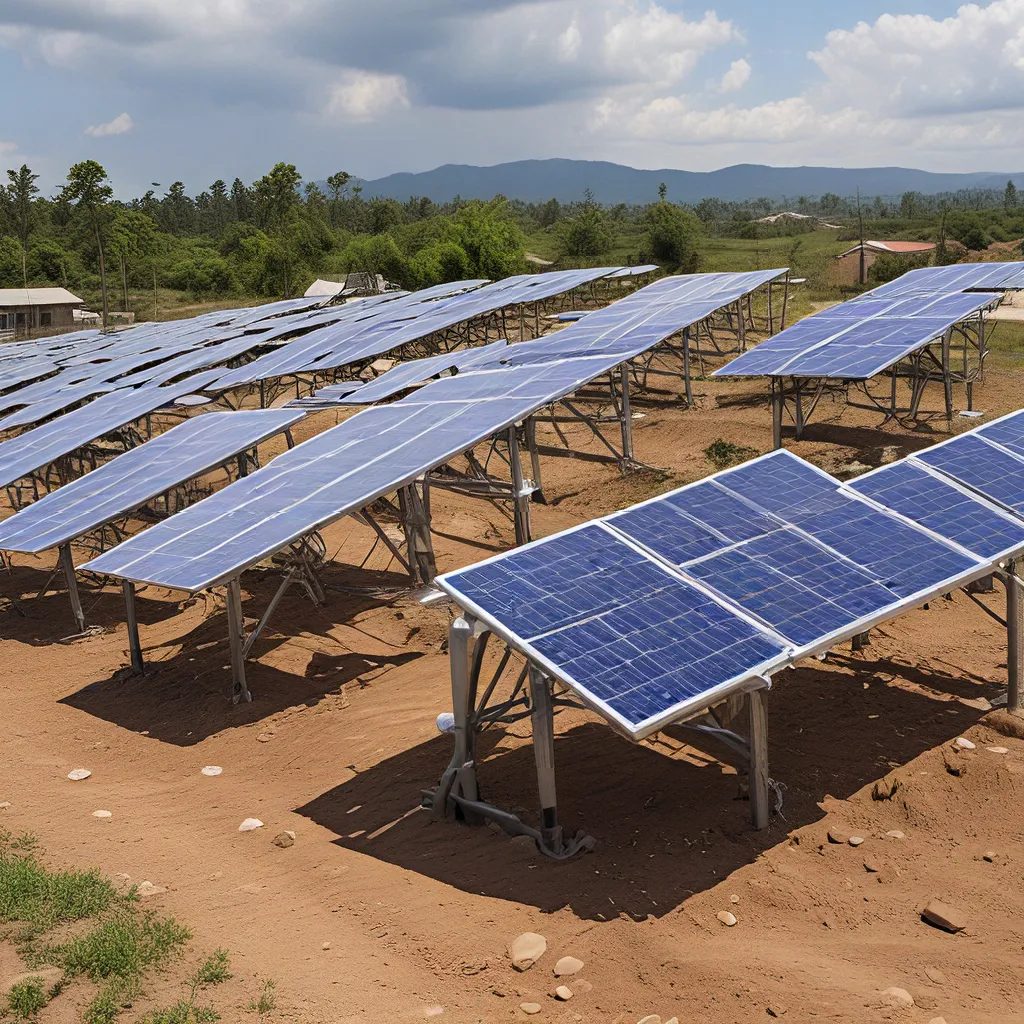
In a world where natural disasters seem to strike with alarming frequency, the need for resilient infrastructure has never been more pressing. As someone who cares deeply about the environment and the well-being of our global community, I’ve been fascinated by the intersection of solar energy and humanitarian aid. It’s a powerful pairing that holds the promise of brighter, more resilient futures for communities in crisis.
The Bright Side of Solar Energy
I remember the first time I learned about the transformative potential of solar energy in disaster relief efforts. It was during a conversation with a friend who had recently returned from volunteering in an area devastated by a devastating hurricane. They spoke of solar-powered field hospitals, emergency response kits equipped with portable solar panels, and the way these renewable energy solutions had revolutionized the speed and efficiency of recovery efforts.
As the article on Green.org outlines, solar energy has a rich history in humanitarian aid, dating back to the late 20th century when organizations recognized its ability to provide clean, reliable power in areas where traditional infrastructure had been destroyed. From powering essential medical devices to enabling communication and lighting, solar energy has become a vital tool in the humanitarian aid toolkit.
Empowering Off-Grid Communities
But the impact of solar energy extends far beyond disaster relief efforts. As the article on LinkedIn discusses, solar-powered solutions are also transforming the lives of off-grid communities, where access to reliable energy sources has long been a challenge.
Imagine a remote village in India, where families have struggled to power their homes and businesses, relying on costly and polluting fossil fuels. Now, picture that same village, its streets lit by the warm glow of solar-powered lamps, its water pumped from solar-powered wells, and its children studying by the light of solar-powered lanterns. This is the reality that solar energy is bringing to communities across the globe, empowering them to take control of their energy resources and build a more sustainable future.
Hydrating and Nourishing with Solar Power
Of course, the benefits of solar energy in humanitarian aid extend beyond just providing electricity. As the Maryland Climate Reduction Plan highlights, solar energy is also crucial in powering water purification systems and supporting agricultural production.
Imagine a refugee camp, where access to clean drinking water is a daily struggle. Now, picture solar-powered desalination units and water filtration systems, providing a sustainable source of life-saving hydration. Or consider a small-scale farm in a disaster-affected region, its irrigation systems powered by the sun, ensuring a reliable food supply for the local community.
Drones and Disaster Response
But the innovative applications of solar energy don’t stop there. As the LinkedIn article explores, solar-powered drones are emerging as a game-changing solution for humanitarian aid efforts in remote and hard-to-reach areas.
Imagine a village cut off from the outside world after a devastating earthquake, its roads impassable and its communication systems down. Enter the solar-powered drone, its sleek, lightweight frame soaring overhead, delivering essential supplies, enabling connectivity, and providing aerial surveillance to aid rescue and recovery efforts.
These drones, powered by the abundant solar energy available in many disaster-prone regions, offer a sustainable and versatile solution to the unique challenges faced by humanitarian organizations.
Overcoming Challenges, Embracing the Future
Of course, the integration of solar energy in humanitarian aid efforts is not without its challenges. As the Green.org article points out, limited funding, lack of technical expertise, and inadequate infrastructure can all hinder the widespread adoption of these solutions.
But I truly believe that the potential of solar energy in humanitarian aid far outweighs the obstacles. With increased awareness, collaborative partnerships, and continued technological advancements, we can overcome these challenges and unlock a future where renewable energy is a cornerstone of disaster resilience and community empowerment.
Imagine a world where energy-saving products like solar panels and batteries are as ubiquitous in disaster relief efforts as emergency food and medical supplies. A world where the power of the sun not only lights up lives but also fuels the engines of recovery and sustainable development.
That, my friends, is a bright future worth striving for. And with our collective efforts, I believe we can make it a reality, one solar-powered solution at a time.